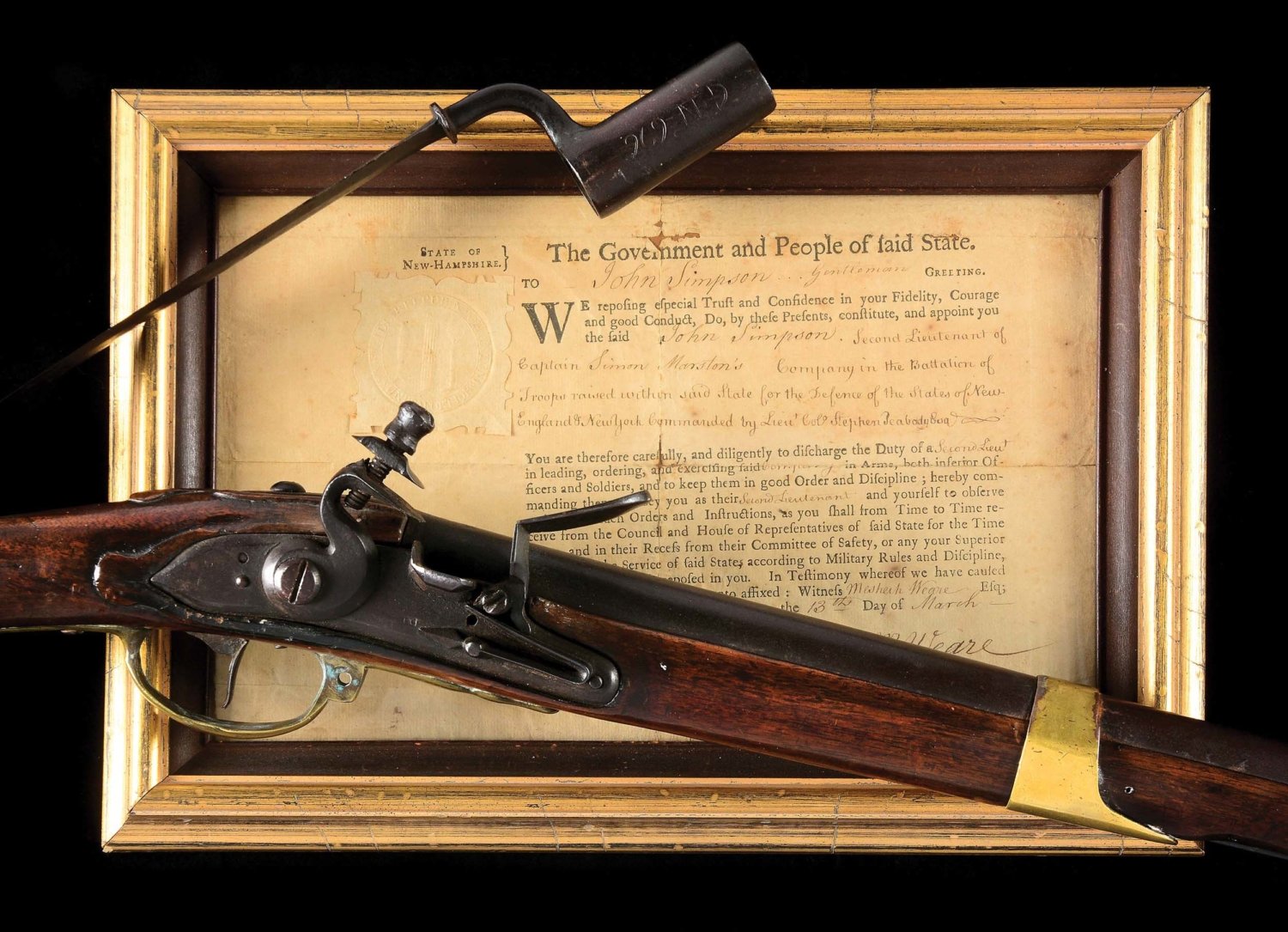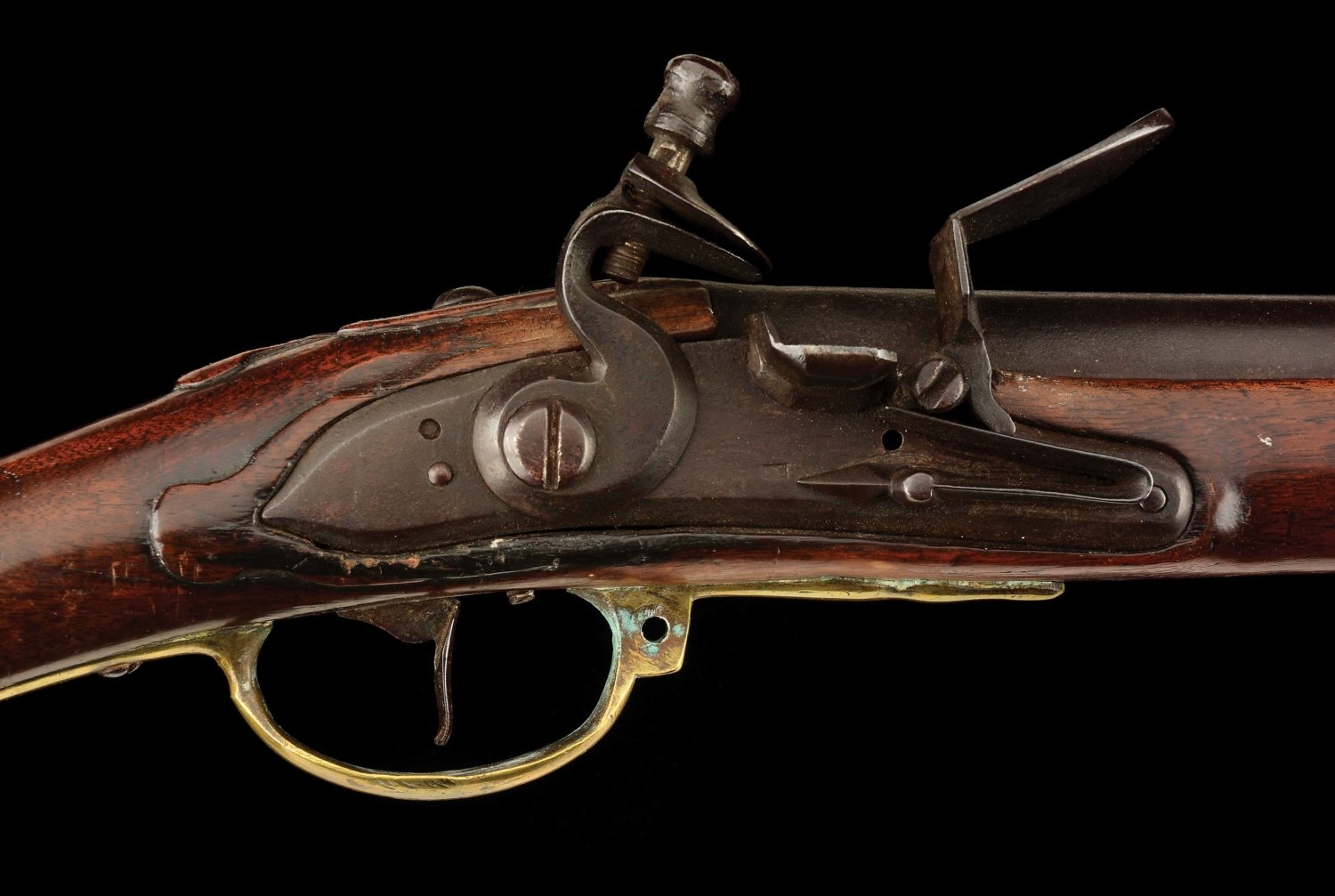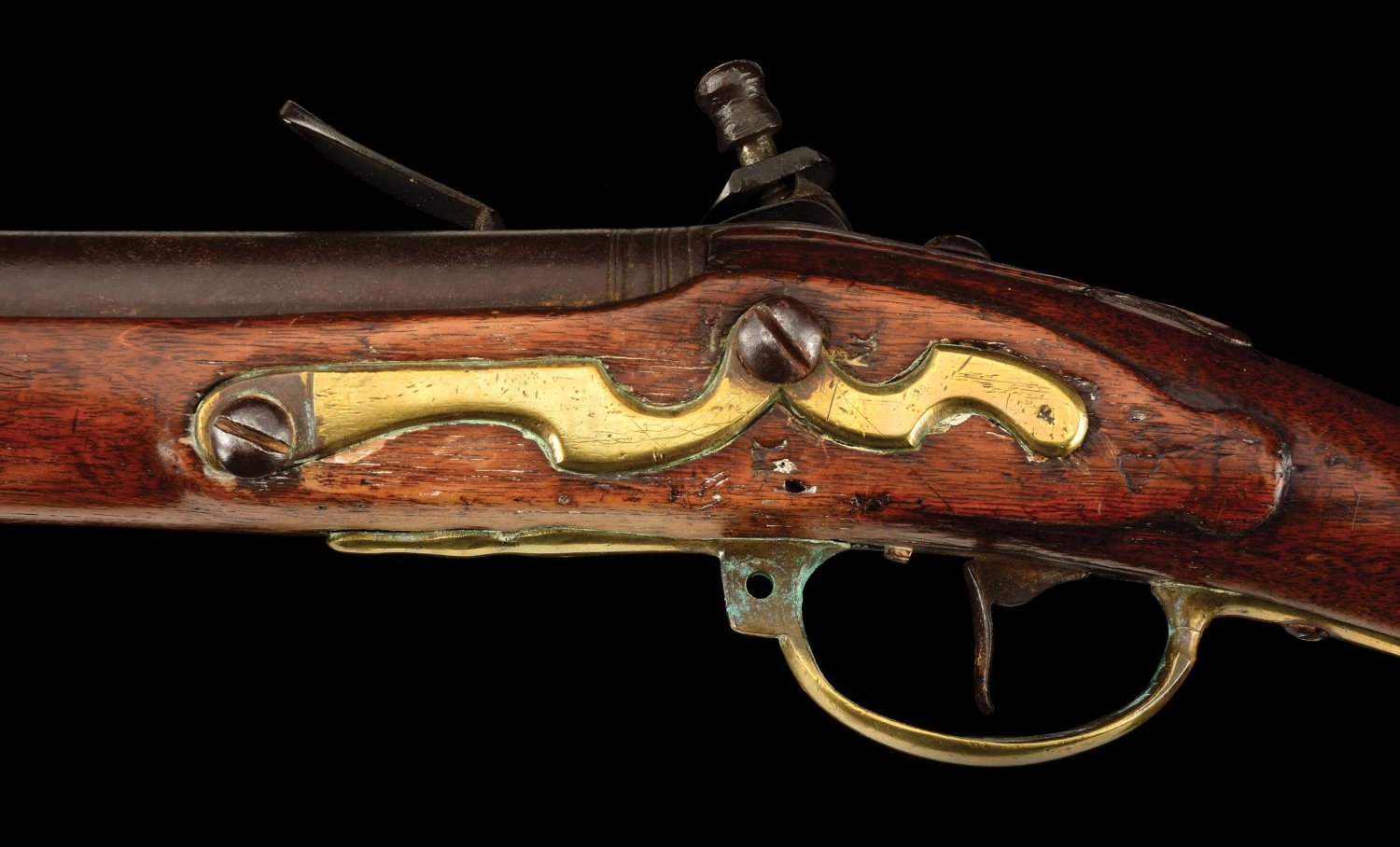 Arguably the most significant, positively identified Revolutionary War long arm in existence, the Dutch flintlock musket that fired the first shot at the 1775 Battle of Bunker Hill. Both the musket & commission have remained in the family for 244 years.
Arguably the most significant, positively identified Revolutionary War long arm in existence, the Dutch flintlock musket that fired the first shot at the 1775 Battle of Bunker Hill. Both the musket & commission have remained in the family for 244 years.An historically significant, fully documented Dutch 0.79 smoothbore Type III flintlock musket and bayonet of Private John Simpson, who fired the first shot at the Battle of Bunker Hill, June 17, 1775. Accompanied by the Simpson's New Hampshire commission to second lieutenant, plus several copies of a 50-page book scrupulously detailing the history of the musket, Simpson family, Battle of Bunker Hill, and Simpson's court martial. Unbroken line of family provenance since 1775.
The 0.79-caliber Dutch flintlock musket with bayonet was originally the property of Private John Simpson (1748-1825) of Deerfield, New Hampshire. After shooting began at the Battle of Lexington and Concord, Simpson joined a volunteer militia led by Captain Henry Dearborn and marched with that company to Boston. They arrived there on June 17, 1775, and merged with two other New Hampshire outfits. In anticipation of the Redcoats’ arrival by water, Colonel William Prescott ordered his patriot forces to fortify their position on the beach with a makeshift barrier of rocks and wood. During what would become known as the Siege of Boston, British troops advanced toward Breed’s Hill and nearby Bunker Hill in Charlestown that morning, after a steady overnight assault of cannon fire on the colonists.
With Royal Navy warships in Boston Harbor as their backup, General William Howe’s British army proceeded up Breed’s Hill in perfect battle formations. It was at that time that Prescott issued the order, “Do not shoot until you see the whites of their eyes!”

Fully documented Dutch 0.79 smoothbore Type III flintlock musket and bayonet of Private John Simpson
Perhaps in his patriotic fervour to fend off a formidable enemy, Simpson jumped to his feet and fired an unauthorised first shot, reputedly hitting a mounted British officer. After enduring two assaults, the colonial troops ran out of ammunition. They retreated over Bunker Hill to Cambridge, ceding control of the Charlestown Peninsula to the British. However the enemy paid a heavy price with 226 dead and 828 wounded. The Colonial casualties numbered 115 dead and 305 wounded.
The day after the Battle of Bunker Hill, Simpson was court martialed for disobeying his commander's orders, but he was only lightly reprimanded and soon returned to duty. By the time the war ended, Simpson had risen to the rank of major. He never applied for a pension and never received a penny for his military service stating “My country is too poor to pay pensions”.


Closeup view of Private John Simpson's musket
The Simpson family is inextricably woven into the tapestry of American history. John Simpson, himself a great patriot was the grandfather of Civil War hero the US President Ulysses Simpson Grant. The flintlock musket with bayonet has remained in his family for the passed 244 years and has been an object of intense interest for many gun scholars and historians.
